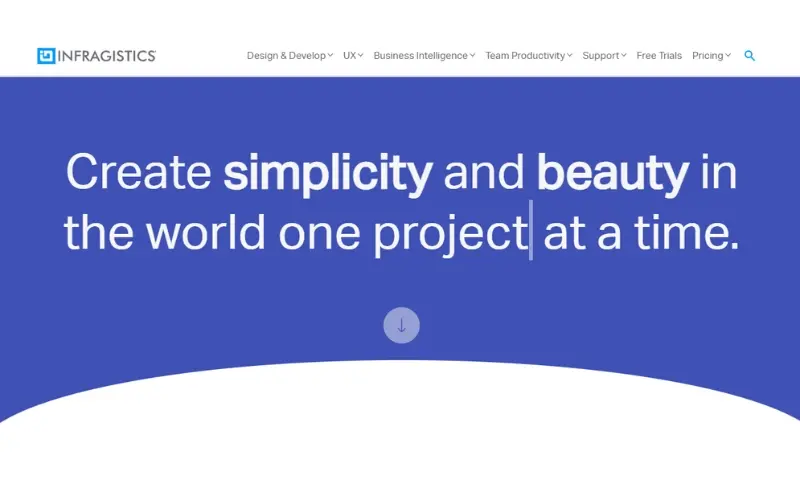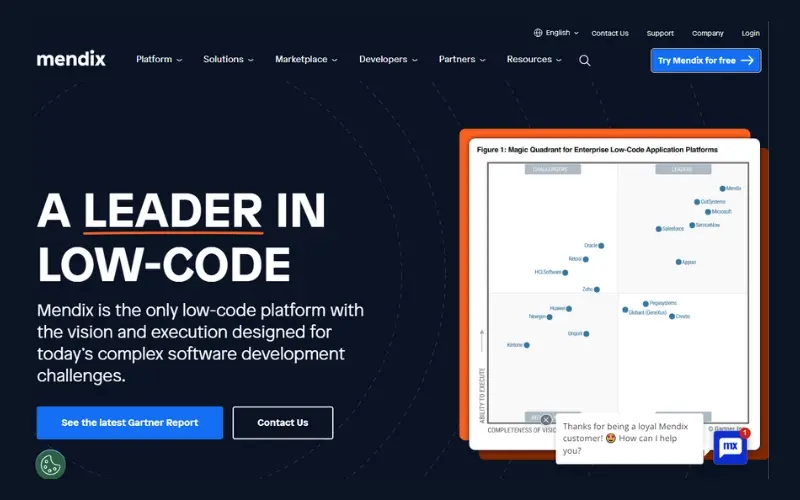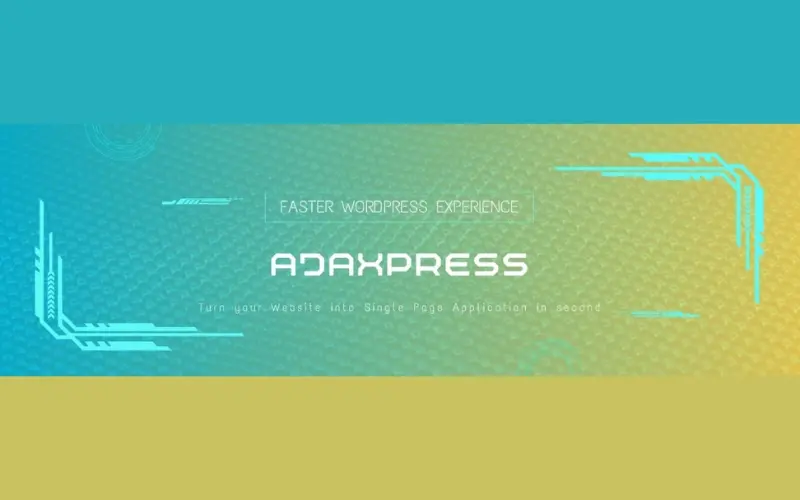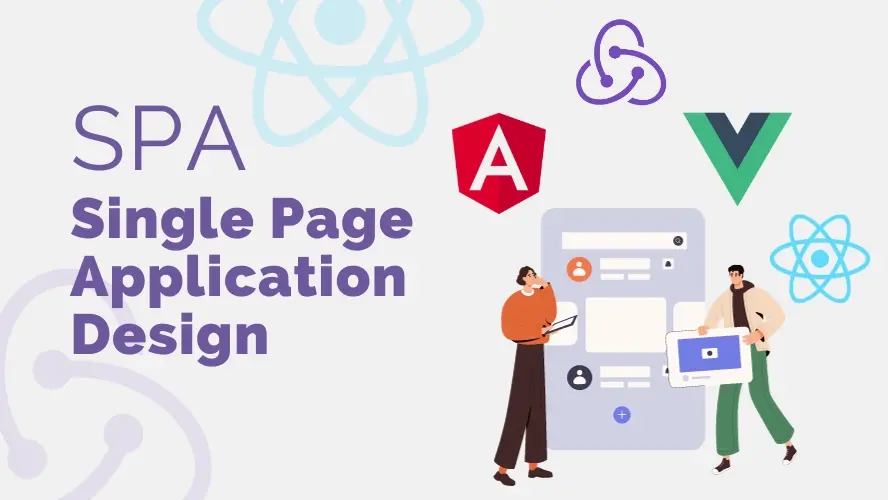The concept of single-page application (SPA) design has been around for many years, but it was not until the early 2000s that SPAs began to gain popularity. This was due in part to the rise of AJAX, which allowed developers to update web pages dynamically without reloading the entire page.
SPAs are now a standard way to build web applications. They offer some advantages over traditional web applications, such as faster response times, a more fluid user experience, and improved performance. This article will include a brief history of SPA, the advantages of using SPA technology, and how to implement it into a website design.
What is SPA Design?
A single-page application (SPA) is a web application that loads faster only a single HTML page and dynamically updates that page as the user interacts with it. This is in contrast to traditional web applications, which load a new HTML page for each user interaction.
SPAs are designed to provide a more fluid and responsive user experience. They are also more efficient, as they do not need to reload the entire page each time the user makes a request.
Brief History of SPA
In 2003, technology evangelists from Netscape discussed the concept of SPAs. The first self-contained website, slashdotslash.com, was created by Stuart Morris, a programming student at Cardiff University, Wales, in April 2002. Lucas Birdeau, Kevin Hakman, Michael Peachey, and Clifford Yeh described a single-page application implementation in US patent 8,136,109 the same year.
In 2005, Google released Gmail, which was one of the first popular SPAs. Gmail showed that SPAs could be used to create complex web applications that provided a fluid and responsive user experience.
In 2009, Backbone.js, a lightweight client-side framework for building SPAs, was released. Backbone.js made it easier for developers to build SPAs and helped to popularize SPA development.
In 2010, Angular.js, a full-fledged SPA framework, was released. Angular.js provided many features that made it easy to build complex and scalable SPAs, such as two-way data binding, client-side routing, and dependency injection.
Since the release of Angular.js, SPAs have become increasingly popular. Many popular websites and web applications, such as Facebook, Twitter, and Netflix, now use SPAs.
The Advantages of Using SPA
Faster response times SPAs are generally faster than traditional web applications because they do not need to reload the entire page each time the user makes a request. This can reduce the amount of bandwidth that is used, and it can also improve the performance of the application on devices with slow internet connections.
More fluid user experience SPAs can provide a more fluid and responsive user experience because SPAs only need to load the code and data that is needed for the current view, rather than loading the entire page each time the user interacts with the application.
Another example is that SPAs can be used to create applications with infinite scrolling, which can allow users to browse through large amounts of data without having to wait for the page to reload.
Improved performance SPAs can be combined with server-side rendering (SSR) to further improve performance. SSR is a technique where the server generates the initial HTML markup for the SPA on the server side. Accordingly, SPAs can improve the performance of web applications by reducing the load on the server.
Better SEO SPAs only need to load the HTML, CSS, and JavaScript files once, and then they can dynamically update the UI without having to make additional HTTP requests to the server. This can reduce the time it takes for the SPA to load on the client side, and it can also improve the SEO of the SPA as they have fewer pages to index.
More efficient development SPAs can also be more efficient to develop than traditional web applications. This is because SPAs can be developed using a component-based architecture, which makes it easier to reuse code and build more complex applications.
Best Use of SPA Design
Things to Consider Before Using SPA Design
Here are some additional things to consider when deciding whether or not to use SPA design for your website:
Content type SPAs are best suited for websites with a lot of dynamic content, such as social media websites, news websites, and productivity apps.
Target audience SPAs are a good choice for websites with a target audience that is likely to be using modern browsers and devices.
Development budget SPAs can be more complex and expensive to develop than traditional websites.
SEO SPAs can be more difficult to optimize for search engines than traditional websites.
What Type of Websites Should Use SPA Design?
SPAs are also a good choice for websites that need to be accessible on mobile devices. SPAs can be designed to be responsive and perform well on a variety of screen sizes and devices.
Single page application (SPA) design is a good choice for websites that:
- Need to be fast and responsive
- Need to provide a fluid and seamless user experience
- Need to be able to handle a lot of user interaction
- Need to be able to update the UI dynamically without reloading the page
Some specific examples of websites that can benefit from using SPA design include:
- Social media websites SPAs are ideal for social media websites because they need to be able to handle a lot of user interaction and update the UI in real-time. For example, when a user posts a new comment, the comment feed should update immediately without having to reload the page.
- E-commerce websites SPAs can also be used to create fast and responsive e-commerce websites. For example, when a user adds an item to their shopping cart, the cart should be fast updated without having to reload the page. This can make the shopping experience more seamless and efficient for users.
- Webmail websites SPAs are also a good choice for webmail websites. For example, when a user opens a new email, the email should load immediately without the need to reload the webmail interface page. This can make the webmail experience more fluid and responsive for users.
- News websites SPAs can also be used to create fast-to-load news websites. For example, when a user clicks on a news article, the article should load instantly which can make the news reading experience more seamless and convenient for users.
- Productivity apps SPAs can be great for creating seamless and responsive productivity apps. For example, when a user edits a document in Google Docs, the document should update faster without having to reload the page. This can make the productivity app experience more effective and efficient for the app users.
- Gaming websites SPAs are a good choice for creating reliably fast and responsive gaming websites. For example, when a user starts playing a game on Netflix, the game should start immediately without having to reload the page. This can make the gaming experience more seamless, engaging, and immersive for users.
How to Implement SPA Design on a Website
Steps to Build SPA Design
To create or build a single-page application (SPA) design, you can follow these steps:
1. Choose the right tools and technologies
Several different tools and technologies can be used to build SPAs. Some popular choices include:
- JavaScript frameworks: Angular, React, Vue.js
- Routing libraries: React Router, Vue Router
- State management libraries: Redux, Vuex
2. Design your SPA
When designing your SPA, it is important to keep the following principles in mind:
- Use a single HTML page for the entire application.
This will allow the application to load quickly and provide a more fluid user experience.
- Use AJAX to update the page dynamically without reloading the entire page.
This will allow the application to be faster and more responsive.
- Use a client-side routing library to manage the navigation between different views of the application.
This will allow the application to be more efficient and provide a more seamless user experience.
- Use a state management library to manage the state of the application.
This will allow the application to be more predictable and easier to debug.
3. Test and deploy your SPA
Once you have developed your SPA, you will need to test it thoroughly to make sure that it works as expected. Once you are satisfied with the results of your testing, you can deploy your SPA to a production server.
SPA Design Builders
A Single Page Application (SPA) design-builder is a tool that helps developers build SPAs more easily and efficiently. SPA design builders typically provide a visual interface for designing the layout and functionality of an SPA, as well as tools for generating the necessary code.
Here are some examples of SPA Design Builders that we can recommend for you:
1. Infragistics Indigo.Design App Builder

It is a cloud-based SPA design builder that allows users to create SPAs using a visual interface. Infragistics Indigo.Design App Builder generates Angular code, which can be deployed to any Angular hosting environment.
2. Mendix

Mendix is a low-code platform that can be used to build SPAs, as well as other types of web applications. Mendix provides a visual interface for designing the layout and functionality of an SPA, as well as tools for generating the necessary code.
3. AjaxPress WordPress Plugin

AjaxPress is a powerful WordPress plugin that transforms your website into a modern single-page application (SPA). It offers seamless navigation, real-time updates, and dynamic content loading to provide a smoother and more engaging user experience. Keep in mind that AjaxPress may be conflicting with other WordPress plugin that also has AJAX features or functionality.
Conclusion
SPAs can significantly improve the performance of web applications by reducing the load on the server. SPAs can be used to reduce the number of HTTP requests, reduce the amount of data that is transferred, and improve the initial load time of the application.
it is important to note that SPAs are not a good choice for all websites. SPAs can be more complex to develop and maintain than traditional websites. If you are considering using SPA design for your website, it is crucial to carefully weigh the advantages and disadvantages. You should also consider the specific needs of your project and your target audience.
Frequently Asked Questions
Can Server-Side Rendering slow down my web application?
While it can introduce slight server overhead, SSR often enhances web application performance rather than slowing it down.
What types of applications can be hosted using SaaS hosting?
SaaS hosting can host various applications, from the simple web to complex enterprise applications.
How quickly can I deploy an application using SaaS hosting?
Applications can be quickly deployed using SaaS hosting, which usually takes just a few minutes.
Can I switch from CSR to SSR without rewriting my entire application?
Transitioning from Client-Side Rendering (CSR) to SSR often requires significant refactoring but might not entail rewriting the entire application.

Audee Mirza is a graphic designer and WordPress developer at audeemirza.com who resides in Surabaya, Indonesia. She's also the author of Graphic Identity Blog, a professional logo designer, and often creates vector illustrations for clients and marketplaces. She enjoys good typography design and all kinds of animation.
View all posts by Audee Mirza




















